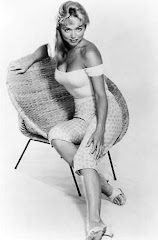
Any contemporary viewers who want to understand the appeal of the late Claudia Jennings, former Playmate of the Year (1970), who would spend her remaining nine years in drive-in fare, need look no further than this terrific southern-fried crooks-on-the-lam romp. As Candy Morgan, the actress plays her archetypal role of a young woman who is aggressive both in life and love. Having just escaped from prison, Candy performs a unique bank robbery by holding a stick of dynamite, and then uses the cash to provide for her family before she skips town. Meanwhile, bank teller Ellie Jo Turner (Jocelyn Jones) gets fired from her job just before the robbery, and gladly helps Candy collect the money. Guess who picks Ellie Jo up when she's hitching a ride? Small town! Anyway, Ellie Jo convinces Candy that they'd have a good thing going as a duo robbing on the road, and their crime spree with sticks of dynamite begins. Later, in a supermarket holdup they kidnap a customer named Slim (Johnny Crawford, the kid from "The Rifleman"), who's hardly an unwilling hostage.
This breezy fare is a solid effort from Roger Corman's New World Pictures, which sums up the drive-in movie experience of the mid-1970's. In addition to the healthy doses of action and sex, there's a freewheeling sense of hedonism and anti-authoritarian stance. But it's also great fun to watch because it doesn't take itself too seriously, with amusing plot twists and a jaunty clarinet score.
Still, it's no wonder that Claudia Jennings fans love this movie. Clad in unbuttoned shirts tied at the waist (when she has clothes on, that is), this stunning honey-haired actress shows her equal adeptness at action and comedy, plus her love scene with the man who sells her dynamite is very hot. Her characters are as fiercely passionate in bed as they are in their causes. (There is also a love scene between Ellie Jo and Slim which is very sweet.)
They sure don't make them like this anymore. God bless the 1970's.
RATING: 4 mosquito coils out of five.





